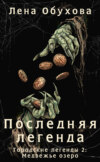Loe raamatut: «Adventures in the Canyons of the Colorado, by Two of Its Earliest Explorers»
FOREWORD
BY GEORGE WHARTON JAMES
Author of "In and Around the Grand Canyon," "Arizona the Wonderland," "The Grand Canyon of Arizona," "New Mexico, the Land of the Delightmakers," etc., etc.
The more the people of the United States know of their scenic wonderlands the more interest will there be aroused as to "who first saw" this or the other of them. The arousement of this especial interest in regard to the Grand Canyon and its tributaries is growingly apparent. A hundred thousand Americans see the Grand Canyon today where one saw it at the time of my first visit, nearly forty years ago.
Among the hordes of people attracted to the Grand Canyon by curiosity, scenic allurement, business, pleasure or what not, but two have gained any fame as guides to its wondrous depths and rim revelations. These two are John Hance and William Wallace Bass. I knew Hance long before he had dreamed that the Canyon would help make him famous; I ate venison stew with him when he was but a cowboy in the employ of the proprietor of the Hull ranch; I wrote the first account of those peculiar and exaggerated yarns of his that gained him his fame as the "Munchausen of the West." It was on these yarns alone that his fame reposed. He was never a guide. He knew nothing of the Canyon, east or west, twenty miles from the trail that unfortunately was named after him. He never read a line of its history, and never cared to know who first discovered it. He got lost years after the Canyon was being visited by great numbers of whites, when he attempted to guide a party to the home of the Havasupai Indians, whose ancestors made the trail which he discovered and claimed as his own.
On the other hand, William Wallace Bass, who came to the Canyon some years ahead of Hance, felt its peculiar allurements from the first moment he saw it. There is no man living who has been more deeply interested in studying its geological history, in searching the tomes of the past for stories of its discovery, and in promoting the intelligent interests of literary men, artists, photographers, poets, geologists, students and tourists who have come to visit it than has he. His library upon the subject is exhaustive and complete, and he is so well versed in some features of its local geology, that he has changed many a scientist's opinions as to the secret of its formation and development. John C. Van Dyke wrote truly of him when he said in his recent book on the Grand Canyon, he "has been 'the guide, philosopher and friend' of almost every geologist at the Canyon. Unquestionably he knows the geology of the region."
Born in Shelbyville, Indiana, in 1848, he came to Arizona, by way of an hospital for incurables in New York, to die. Life in the open gave him a new hope, and at 72 he is still hale, hearty, vigorous and capable of more work than many a city-bred youth of 25. His life in Arizona has been a romance throughout, and in much of it I have either shared or been an interested spectator. My first meeting with Mr. Bass was at Flagstaff in 1888, under the following circumstances:
I had gone out to the Canyon, from Flagstaff, with the Rev. Stewart Conrad Wright, a Methodist minister, and several women. The Methodist church at Flagstaff had just been built, and on my return the minister invited me to give a lecture on what I had seen. At the close of the talk – which undoubtedly was a pretty crude though enthusiastic attempt – Mr. T. G. Norris, a lawyer with whom I had become acquainted, brought up to me a man dressed in typical cowboy fashion, evidently just off from a roundup, and introduced him as Mr. W. W. Bass, who wished to talk to me about the Canyon. He expressed his opinion of my knowledge of the great abyss in no qualified terms, and wound up by extending to me an invitation to go with him as his guest to the Havasupai Indian village, in company with a special representative, S. M. McGowan, sent out to investigate the condition of these Indians. Afterwards he would take me to another, and he claimed more wonderful and scenic portion of the Canyon. Gladly the invitation was accepted, and the following week saw me at Williams, starting out in a wagon driven by Mr. Bass, with Mr. McGowan as my vis-a-vis.
This trip was my introduction to the Havasupai Indians and the wonders of their romantically located home. But of greater importance than this was the fact that this trip firmly established a friendship with Mr. Bass that nothing has ever even momentarily shaken, and the years have rendered but more firm and secure. Mr. Bass and I are both very human, have many of the frailities and weaknesses common to mankind, but regardless of them all, or of their magnification by officious meddlers and mischief-makers, we still preserve that unbroken serenity and confidence of friendship vouchsafed but to the most favored of men. We differ on a thousand subjects; we argue about men, measures and history; we read geology, ethnology and archaeology from different standpoints; he is aggressively argumentative, I am conciliatory acquiescent, yet in one thing we are steadily united, viz., in our devotion and love to the great canyon in or near which he has spent so great a part of his life.
This devotion on his part has led to the following of many faint clues that suggested the possibility of adding something of value to its history. The results of his investigations in two cases are herein recorded. Their value is unquestionable. The narrative of Mr. Hawkins bears throughout the stamp of truth, and while I was one of the first to express disbelief in the story of James White, I am now free to confess that the evidence of his truthfulness is growing powerfully within me.
Mr. Bass has done good service to those who are interested in Canyon history by securing these stories and I am confident they will meet with a cordial reception.
GEORGE WHARTON JAMES.
Pasadena, Calif., April, 1920.
INTRODUCTION
BY W. W. BASS
My interest in the Grand Canyon dates from soon after my arrival, in July, 1883, at Williams, Arizona. I had come West for my health on the still uncompleted line of the Santa Fe route, then known as the "Atlantic & Pacific." Williams was a railroad construction town and vied with Kingman in its "wild and woolly" reputation, but I located there and soon began to improve in health. In one of my exploring trips (the story of which is fully told in my life history, soon to be published), I found it necessary to refer to the available maps in order to secure what information was possible as to water locations and the general contour of the country I desired to explore. I succeeded in securing a Government map, and, as it was one with the name of J. W. Powell as Director of the Geological Survey, I supposed it was correct and reliable. But, to my dismay, after four days' journey following the dry washes and valleys I found myself farther away from the walls of the Grand Canyon than when I started. The water-holes and tanks were a myth and my animals nearly famished before I could retrace my steps to where I knew I could save them. In a word, the drainage system as shown on his map was a delusion and a snare and nearly resulted in my disaster.
Naturally, this incident made me suspicious ever after of anything Powell claimed to have done in this particular region, but it remained for me to have some very positive evidence as to the reliability of his claims in another direction. Up to this time I had never met him and when in 1887 he employed me as guide in some triangulation work on the Bill Williams Mountain I was thoroughly convinced as to the doubtful character of certain statements he made to me regarding other work of the same nature he claimed to have done some years previous. One in particular was as to a station he said I would find on "Red Butte," which lies about forty-five miles northeast of Williams and is a prominent feature on the landscape, as it is the only one to be seen anywhere along the south wall of the Grand Canyon for a distance of over fifty miles. It lies in the plain about twelve miles from the Canyon wall. As I had spent considerable time there only a few days previous in looking for a silver prospect reported to be there, I knew there was no such pile of rocks as he described and never had been within the knowledge of the oldest inhabitant in this region. I could not find enough rocks on the top of that mountain to build a respectable mining location. I also knew of others who had been there on the same mission and they can verify this statement. In addition to this the later geological work in this section failed to locate any such station as was claimed by him to me.
These incidents will explain, in great measure, my suspicions and questions as to anything related by Major Powell. Accordingly, when I secured a copy of the Government publication entitled: "Exploration of the Colorado River of the West and its Tributaries, Explored in 1869, 1870, 1871 and 1872, under the Direction of the Secretary of the Smithsonian Institution," and found it was written by Powell, it did not have the same weight with me that it would have done had I not had these personal experiences with him.
It will be recalled by many of my readers that Powell made two trips through the Canyons of the Colorado. Yet in this Government-published volume he makes scant reference to the second trip, and utterly fails to do credit to the members of his party. Why he should have failed to include his experiences and record the names of the men who constituted his force on this second trip has always been a mystery to various explorers of the Canyon, and especially to the members of the party, one of whom was F. S. Dellenbaugh. In his account of this trip in his book, "The Romance of the Colorado River," published in 1906, he states that perhaps this omission was for the sake of dramatic unity. Be this as it may, it has always seemed as if for some reason Powell did not care to do full justice to the brave men who accompanied him on this trip.










